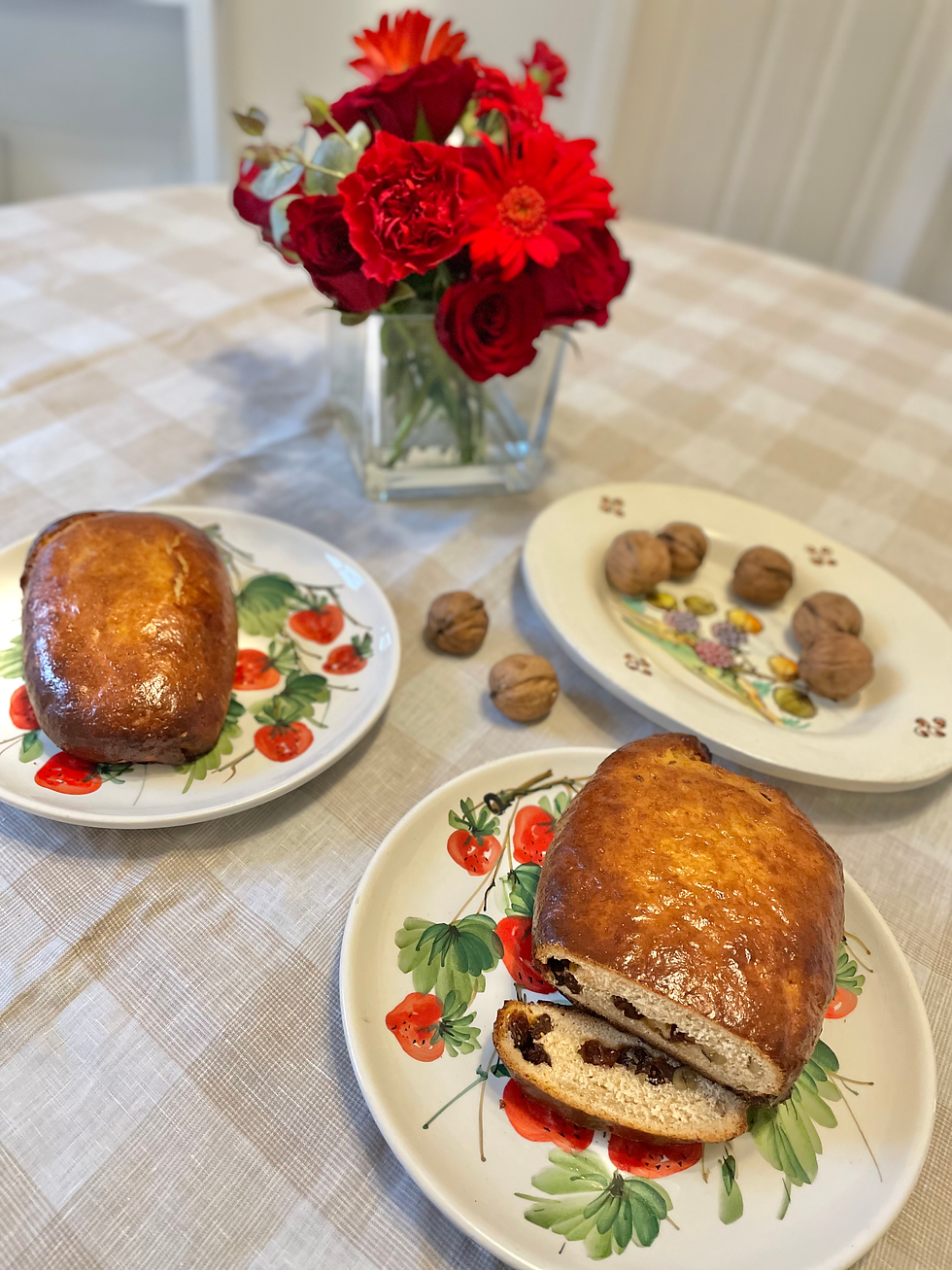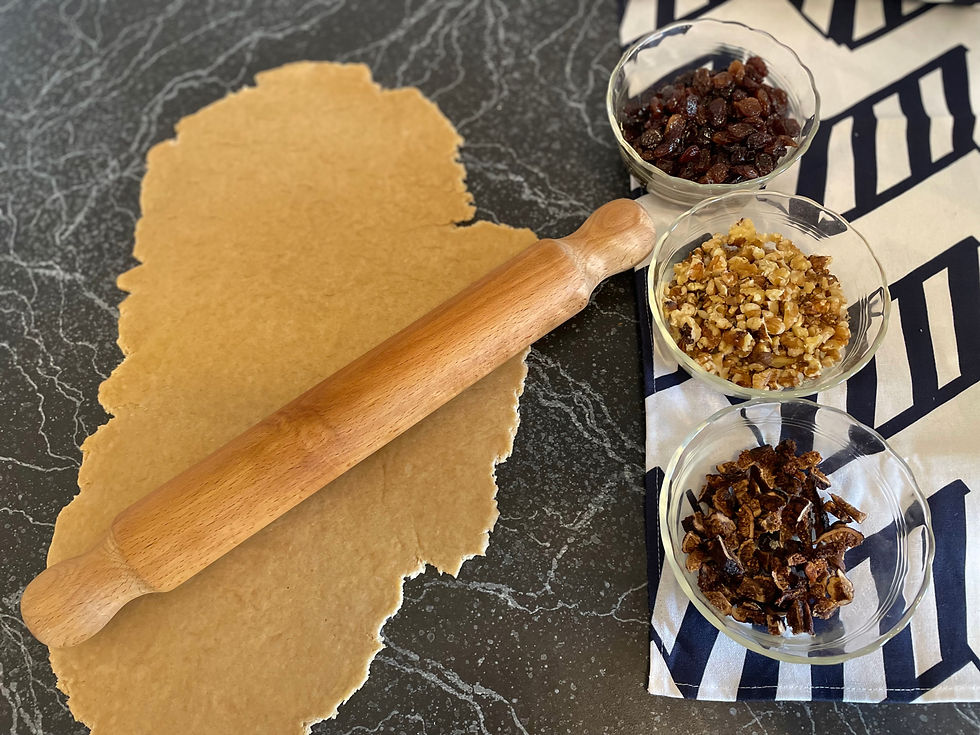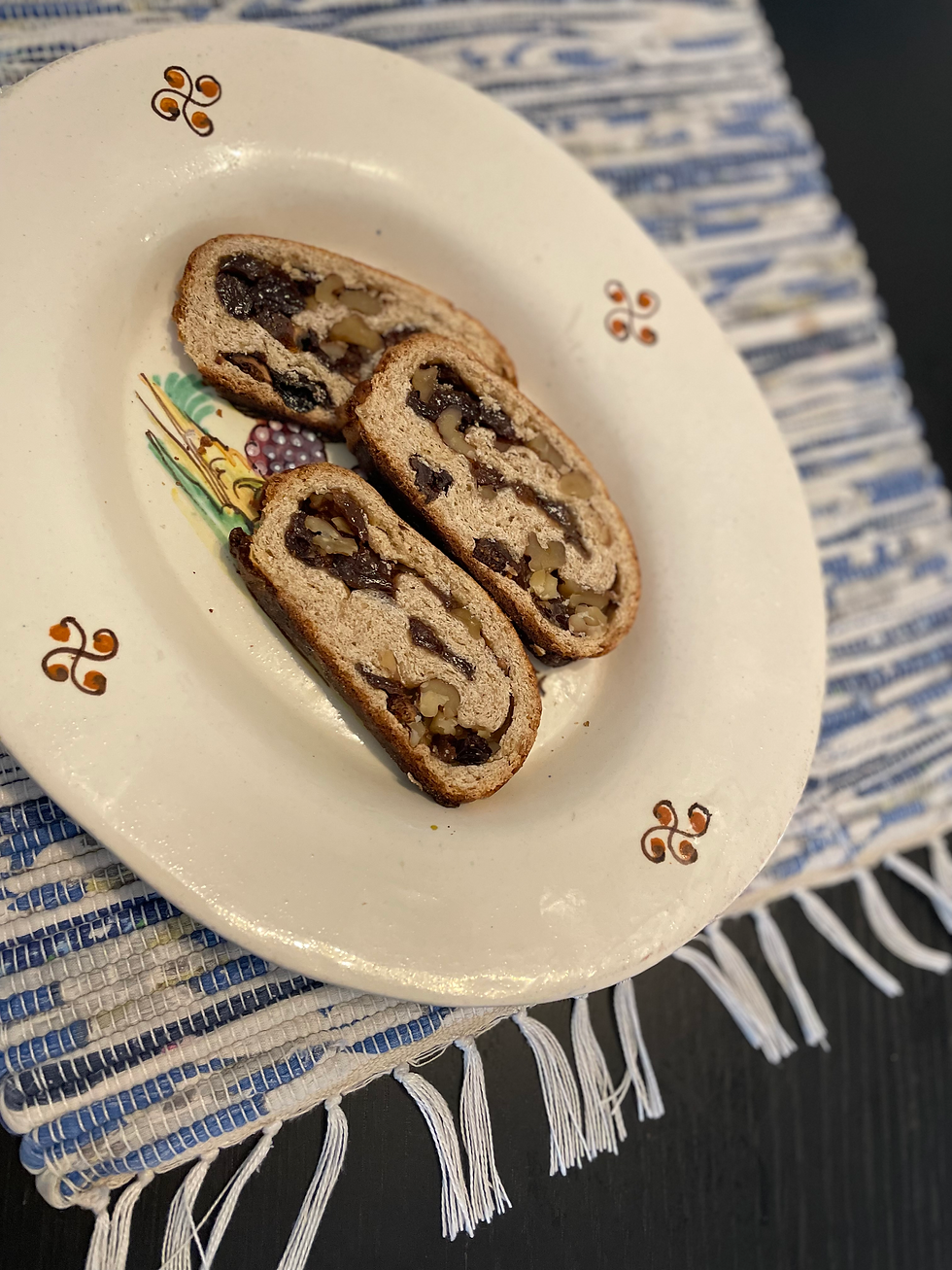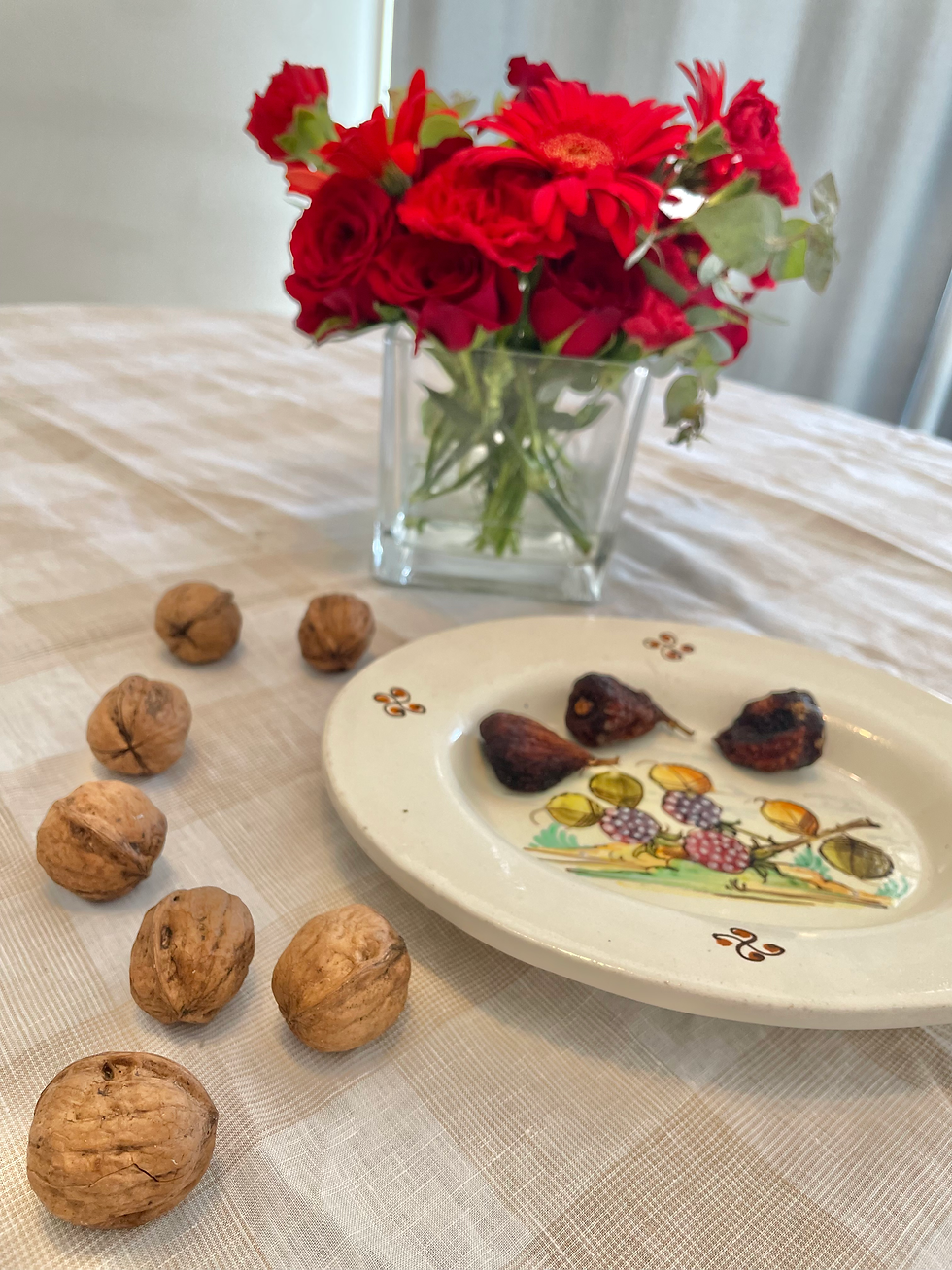6. Bisciola – Nonna Maria's Cucina Alpina
- Reiko Okazaki
- Aug 23, 2024
- 3 min read

When it comes to desserts in Valtellina, you are spoilt for choice– of course there is gelato, enjoyed by young and old, at all times of day; as well as buttery tarts filled with custard, fruit, or jam, making the most of the local produce. Cupeta, a honey nougat with walnuts, is another typical sweet. Apple fritters, berries, pear and chestnut cake abound. The best part is that these are all hand-crafted in very small batches. As a digestif, there is a selection of local Amaro liqueurs infused with alpine herbs, such as Braulio from Bormio, which is made from exclusively natural ingredients.
Nonna Maria recalls getting in trouble as a child for taking chestnuts from neighbouring properties. Sugar, an important preservative in the form of jams and baked goods, were rationed during the Second World War. The region is heavy on hydroelectricity and Maria’s father worked at the local electric plant, so Maria’s family had better access to supplies than others in the village. Still, she remembers the scarcity and cowering behind blackout blinds. Fortunately, she only has positive memories of the occupying German soldiers.
Bisciola is a rye, buckwheat or wholemeal sourdough loaf with fig, sultanas, nuts and honey, traditionally eaten at Christmas. For this reason it is referred to as “Panettone Valtellinese”, but it more resembles stollen than a brioche.

For this recipe I made a yeasted version, due to the fact that it is difficult to get a heavy dough with less gluten to rise via a sourdough starter– whilst we love rye sourdough in our household, I don’t attempt it myself. As artisanal bread becomes more prevalent but somehow also more expensive, I like visiting a Jewish bakery that has numerous kinds of unyeasted rye bread!
Bisciola is best sliced thinly and dipped in coffee, grappa or zabaione.
A true Bisciola has the dried fruit and nut filling mixed through, but I needed to adopt a strudel shape because I was working with a temperamental oven that could have burnt the outside, even if covered. Bisciola is best sliced thinly and dipped in coffee, grappa or zabaione. Keep the rest of the loaf covered in ceramic, paper or cloth (just not in plastic, to avoid mould), and it will keep at room temperature for at least a week. The bread will also freeze well for a few months.

Bisciola recipe
2 loaves, each weighing 500g.
1 g sugar
100 g warm water (25 degrees celsius)
20 g active dry yeast
20 ml warm water
50 g raw sugar
1 tsp honey
250 g unbleached all-purpose flour (tipo 0)
50 g rye flour
2 g salt
60 g unsalted butter, softened, cut into 6 pieces
Filling:
150 g walnuts, chopped
100 g sultanas
100 g dried figs, chopped
Grappa or other liquor
Egg wash:
1 egg beaten with 1 tsp water and a pinch of salt
Soak the sultanas and figs in grappa for about an hour.
Dissolve the sugar in the warm water. Sprinkle in the yeast, no need to stir, and let stand until very foamy, about 10 minutes.
In a small bowl, stir together the warm water and sugar. Once dissolved, stir in the honey until it dissolves.
In a large bowl, stir together the flours and salt. Add the dissolved yeast and start mixing. Gradually add the sugar/ honey liquid. Mix until a cohesive dough forms and no dry flour remains, scraping down the bowl as needed. Add milk or water if the dough is too dry to come together in one mass.
Add the butter one piece at a time and mix until fully incorporated before the next addition. Continue kneading until the dough is smooth and elastic, cleaning the sides of the bowl. The dough should be soft, supple, and not sticky.
Turn out the dough onto a lightly floured surface and shape into a taut ball. Put the dough into a lightly oiled mixing bowl, seam side down. Cover tightly and set aside to rise.
The fully risen dough has doubled in size, about 2 hours.
Fold through the filling.
Cut the dough in half. Knead them into balls so that the filling is enclosed.
Set the loaves on a parchment-lined baking sheet several inches apart and cover loosely with a tea towel. Let them rise for about 30 minutes just until slightly puffy.
Set a heavy cookie sheet on an oven rack adjusted to the centre position and preheat to 180 degrees celsius.
Uncover the Bisciola. Brush with egg glaze, and set the baking pan onto the cookie sheet.
Bake for 45 minutes, until a shiny deep golden brown. Tent with foil after 20 minutes.
Cool completely on a wire rack, wrap in a tea towel and let it stand overnight before serving.




Comments